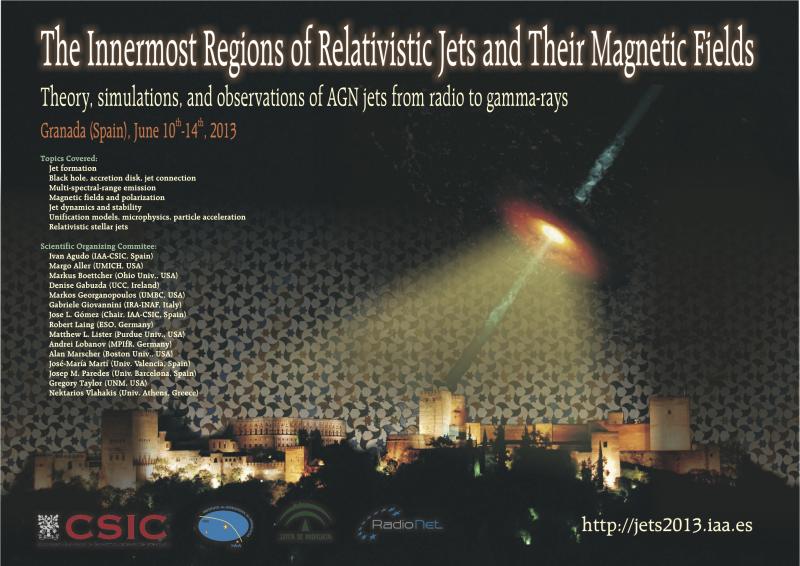The Innermost Regions of Relativistic Jets and Their Magnetic Fields. Granada (Spain). June 10th-14th, 2013.
Kiehlmann, Sebastian
Probing the magnetic field of 3C279.
Author list: S. Kiehlmann, T. Savolainen on behalf of the Quasar Movie Project team
Magnetic fields play a major role in the launching, acceleration, collimation, and radiation properties of extragalactic jets. The only direct way to observationally access magnetic fields in jets is to measure their polarization imprint on the emitted synchrotron radiation. As part of our Quasar Movie Project, a large, densely-sampled data set, consisting of multi-wavelength photometry (radio to gamma-rays), polarimetry (radio, mm, and optical), and multi-frequency VLBI observations of the gamma-ray bright quasar 3C279, has been collected in 2010-2012. Here we present the results from the polarization monitoring at optical, millimetre and radio wavelengths, and discuss their implications on the structure and magnetic field of the emission zone. 3C279 exhibits strong variation of the optical electric vector positioning angle (EVPA), showing continuous EVPA-rotations larger than 360 degrees in both clockwise and counterclockwise directions. One of the rotations coincides with a gamma-ray flaring period and could be interpreted as a newly ejected emission feature spiraling in the jet and probing a toroidal magnetic field along its streamline. Variations in the polarized flux are consistent with this. There is also a continuous rotation of the EVPA at mm-wavelengths during the same event, albeit ~4-20 times slower than in optical. Explaining these rotations within one model poses a challenge, and none of the current models can easily explain all the observed behaviour.




